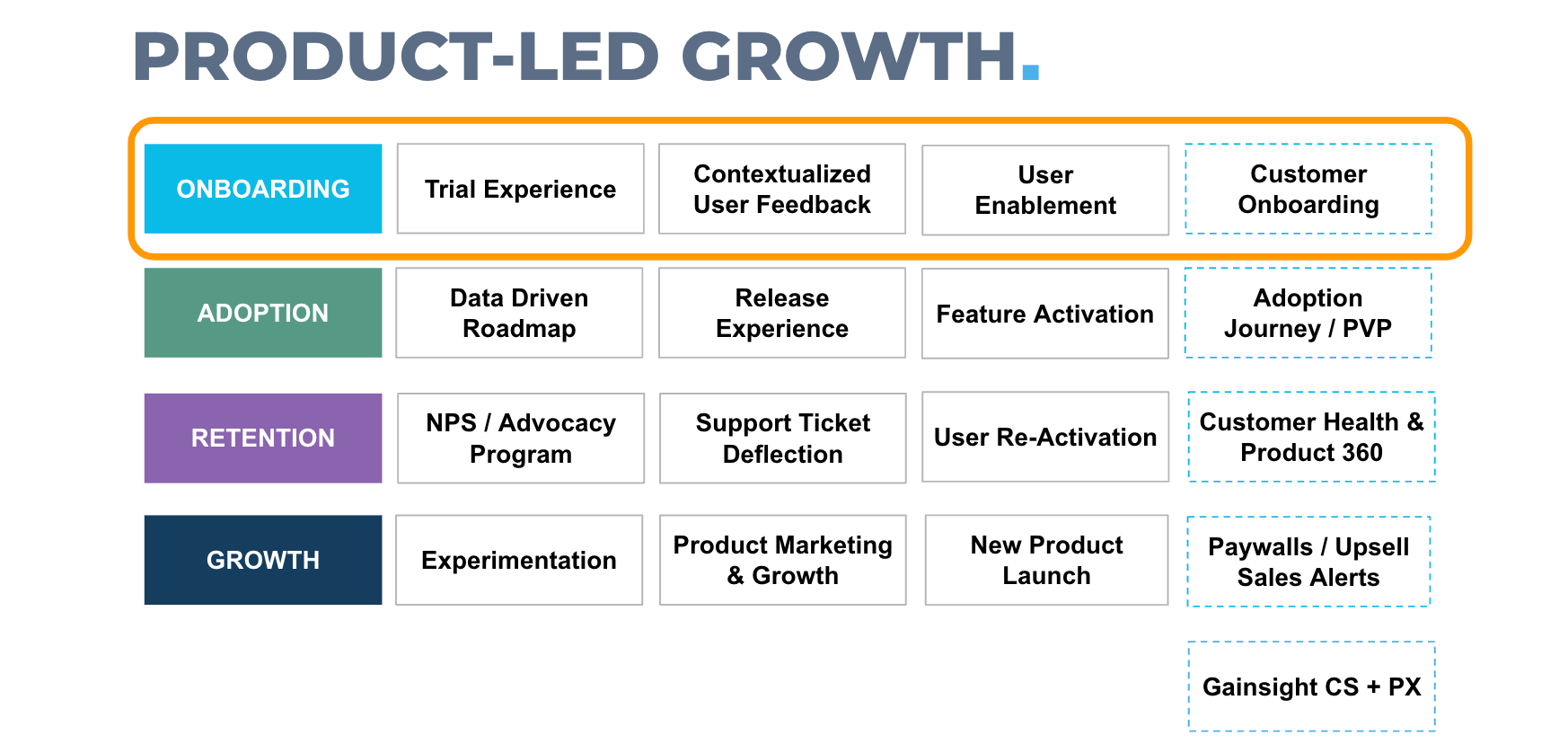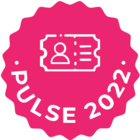Product-Led Growth (PLG) is a strategic approach that utilizes the product itself to drive customer acquisition, activation, retention, and growth of customers.
Onboarding: Onboarding is a critical process aimed at helping new users become familiar with a product, understand its key features, and achieve their desired outcomes. A well-designed onboarding experience ensures a positive user experience, reduces churn, and sets the stage for long-term engagement and customer loyalty.
Here is a list of things to consider for a new user onboarding
- Welcome and Account Setup
The onboarding process typically starts with a warm welcome message upon user registration or sign-up and helps them create a profile or account as per product requirements. - Product Tour and Feature Highlights
Products often provide a product tour or walkthrough to introduce users to the platform's key features and functionalities this can be achieved by interactive tutorials, tooltips, or guided tours. - User Education and Resources
Educational resources like knowledge bases, video tutorials, or documentation are made available to help users learn at their own pace which can be shared by email or even utilizing a help bot. - Personalization and User Segmentation
Personalize the onboarding experience based on user attributes, goals, or user behavior data and target automated messages based on their segmentation. - User Enablement and Success Metrics
Guiding new users to perform certain tasks can boost onboarding and continuously measuring the success can help you build a better onboarding. - In-App Engagements and Contextual Feedback
In-app engagements provide real-time support and assistance for the user during the onboarding, and contextual feedback helps address user questions or concerns as they interact with your product. - Customer Support and Assistance
Providing exceptional customer support to assist users and address inquiries promptly, and reaching out to customers in case they need assistance - Monitoring User Progress
Monitoring user progress to identify potential bottlenecks and continuously improve the process. Also can collect NPS with comments to gauge sentiment and suggestions - Customer Success Team engagement
If applicable, empower your customer success team to reach out to users during onboarding to offer personalized assistance and answer any questions. - Celebrate Milestones and Achievements
Provide positive reinforcement to keep users motivated and engaged. Also, celebrate user achievements and milestones reached during the process.
We at PX divided PLG into 4 different stages of onboarding as shown below.

We previously published a post on implementing and evaluating the trial experience. You can find the link to that post here
Now, let's delve into the comprehensive process of building onboarding. It encompasses three major aspects that are essential for a successful experience:
- Customer Onboarding
- Contextualized User Feedback
- User Enablement
We can combine elements from all three sections to craft an enhanced onboarding user experience.
Customer Onboarding:
- Guide new users through the initial setup process with clear instructions and step-by-step guidance.
- Provide a product tour to familiarize users with key features and functionalities.
- Offer personalized onboarding experiences based on user segments, goals, or preferences.
Contextualized User Feedback:
- Implement in-app surveys or feedback prompts at relevant points during the onboarding journey to gather insights on user experiences, expectations, and pain points.
- Utilize feedback to understand users' specific needs and tailor the onboarding process accordingly.
- Use contextual user feedback to identify areas for improvement and iterate on the onboarding experience.
User Enablement:
- Provide self-service resources, such as knowledge bases, video tutorials, or interactive guides, to empower users to explore and learn the product independently.
- Deliver personalized tips and best practices based on users' specific needs and goals.
- Leverage automation to send targeted educational content and support materials throughout the onboarding period.
By combining customer onboarding, contextualized user feedback, and user enablement, you can create a comprehensive onboarding experience that addresses user needs, gathers valuable insights, and empowers users to become proficient with your product.
Similar to our trial experience, let’s build a 30-day onboarding strategy with a mix of all 3 categories.
Welcoming and Basics
Day 1: Send a personalized welcome email or message to new users, providing an overview of the platform and its key benefits.
Day 2: Provide a step-by-step onboarding checklist or tutorial to guide users through the initial setup and configuration process.
Day 4: Trigger an in-app survey or feedback form to gather initial insights on users' expectations, goals, and any challenges faced.
Feature Exploration and Education
Day 8: Introduce one or two key features through in-app tooltips or mini-tutorials, highlighting their value and practical usage scenarios.
Day 10: Share educational resources like blog articles, video tutorials, or knowledge-base articles that provide in-depth guidance on specific features or use cases.
Day 12: Encourage users to explore and experiment with different features by offering incentives or gamification elements, such as badges or rewards.
User Personalization and Assistance
Day 15: Collect contextualized feedback through in-app surveys or feedback prompts to understand users' specific needs and challenges.
Day 18: Based on user feedback, provide personalized recommendations and tips to help users achieve their goals more effectively.
Day 20: If applicable, offer live chat support or access to a dedicated customer success representative to address individual questions or concerns.
Process Improvement and Engagement
Day 22: Conduct a comprehensive user feedback survey or Net Promoter Score (NPS) survey to evaluate the overall onboarding experience and gather suggestions for improvement.
Day 24: Provide advanced training resources or webinars for users who have shown interest in specific features or have reached certain milestones.
Day 26: Share success stories or case studies from existing users to inspire and showcase the potential value of the platform.
Day 28: Celebrate users' completion of the 30-day onboarding journey with a personalized message, expressing appreciation for their commitment and achievements.
Day 30: Invite users to provide testimonials or refer friends, offering rewards or exclusive benefits for their participation.
Remember to continually analyze and improve your new user onboarding based on user feedback and data to enhance the overall user experience.
Happy PXing!!
